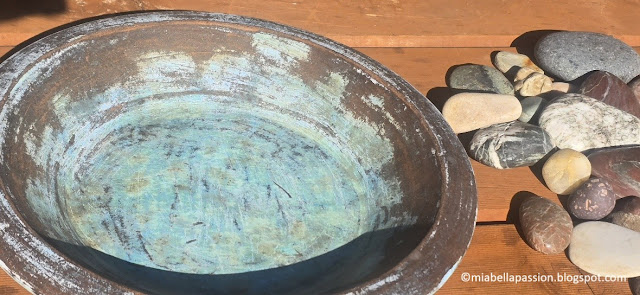Establishing a bee-friendly habitat is easier than it may seem. In this blog post, we’ll walk you through making a simple dish with stones water station for bees as well as highlighting the advantages it brings to these essential garden pollinators.
How To Make A Bee Water Station
Materials Required:
· A shallow bowl or dish (ceramic or metal preferred)
· Small rocks or pebbles
· Clean water
Steps to Create Your Bee Water Station
1. Select a Spot: Look for a sunny area in your garden or patio, ideally shielded from strong winds. A sheltered spot will help bees feel secure while drinking.
2. Prepare Your Dish: Position the shallow dish on the ground or on a stable platform.
3. Add Pebbles: Fill the bowl with small rocks or pebbles. They will create landing spots for the bees.
4. Fill with Water: Carefully pour clean water into the dish, ensuring the stones remain partially submerged. This setup will allow bees to drink without the fear of deep water. Collected rainwater is preferable.
5. Check Regularly: Monitor the water station regularly, especially on hot summer days. Top it up as needed and refresh stagnant water to maintain cleanliness.
Wash the stones every week or so to remove any algae bloom.
6. Make it pretty: Enhance the dish every few days with flowers if you would like. This helps attract the bees to the water station.
The Advantages of a Bee Water Station
Creating a dedicated source of water for bees holds several significant benefits:
· Access to Water: Bees require water for hydration, particularly during warmer spells. Your station meets this essential need.
· Enhanced Pollination: Well-hydrated bees function more effectively as pollinators, which supports plant and flower growth.
· Encouragement of Local Bee Populations: By establishing a water station, you actively support bee health and diversity, which is crucial for ecological balance.
The Importance of Water for Bees
Bees are often celebrated for their role in pollination. Still, their survival also hinges on access to clean water, which is vital for their daily activities in the hive and overall health and well-being.
What Do Bees Use Water For?
· Temperature Regulation: Bees use water to cool their hives. During hot days, they can collect water and spread it throughout the hive, fanning it with their wings to lower the temperature.
· Food Preparation: Water is essential for diluting honey for feeding larvae. It helps dissolve crystallised honey, making it easier for bees to consume and share.
· Cleansing: Bees require fresh water to clean their bodies and maintain hygiene within the hive. This helps prevent the spread of diseases and parasites that can threaten the bee colony's survival.
· Making Bee Bread: Combining water with nectar and pollen helps bees to create bee bread.
Bee Bread is a protein-rich food source that is essential for the growth and development of young bees.
Setting up a simple dish and stone bee water station is an easy yet impactful way to nurture the bee population while aiding their survival.
Just by creating a 'Bee Water Station' in your garden, you will be contributing positively to your local environment and promoting a more sustainable ecosystem for all.
It's also a great activity to teach children responsible and helpful environmental care.
#bees #beehealth #beewaterstation #helpingbees
#beefacts

















